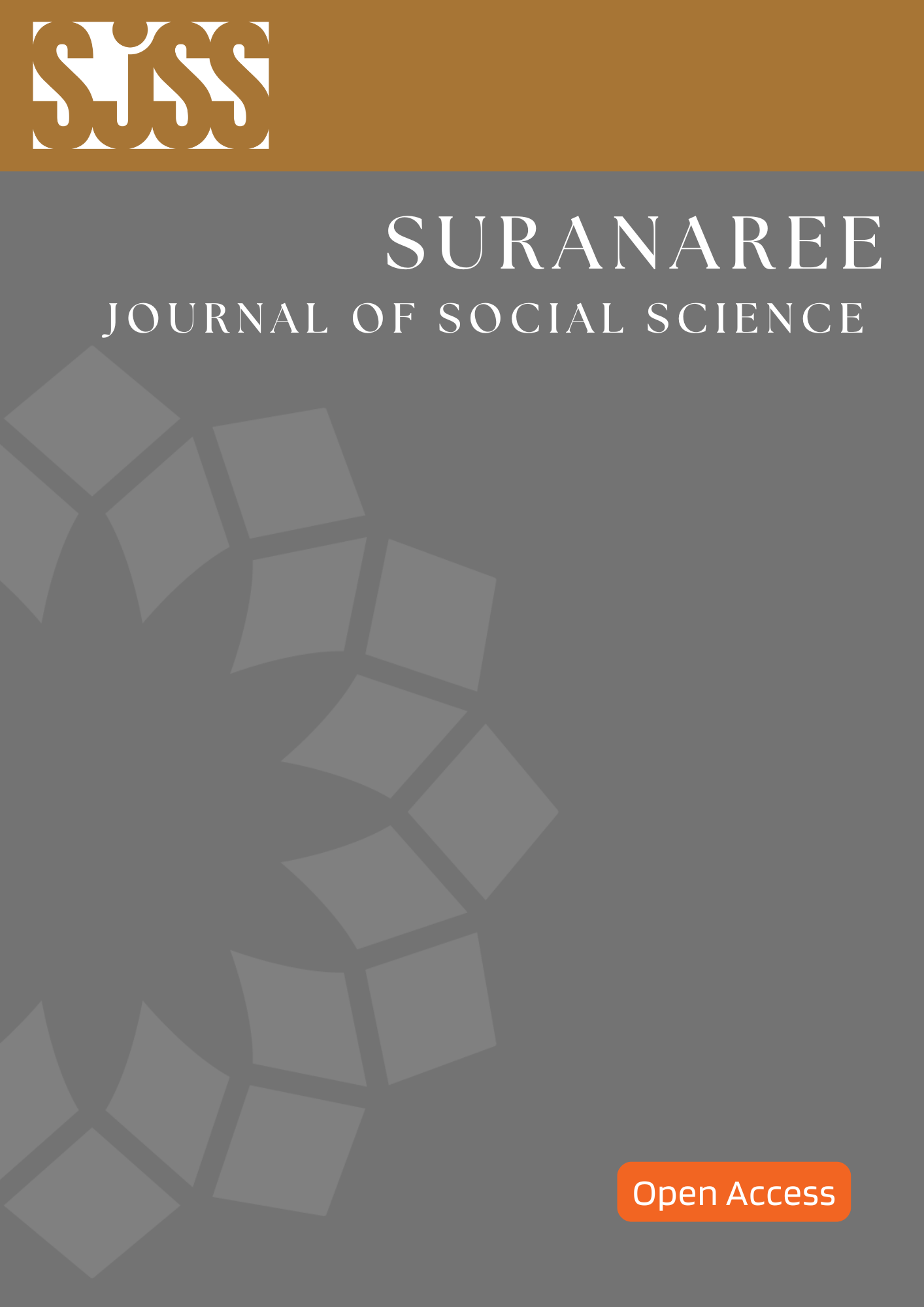The Influences of Loaded Words in Tragic News Headlines on Readers’ Emotions
Main Article Content
Abstract
In tragic news, the use of loaded words is one prominent device in constructing effective news headlines to draw interests and provoke readers’ emotions. Nevertheless, with a dearth of research studies in this phenomenon, the aims of this qualitative study are to investigate 1) what word classes of loaded words are found in tragic news headlines, and 2) how these loaded words provoke emotions and reactions in news readers. First, 180 tragic news headlines were purposively selected from all news headlines on nine websites between July to October 2019 and analyzed. The findings revealed that nouns and verbs were the two most prominent word classes used as loaded words (48.18% and 33.64%, respectively). Moreover, these loaded words were found at both word and phrase levels. Second, to explore news readers’ emotions, the two main instruments were used: 1) online questionnaire with 20 news headlines were uploaded, finally, 52 male and female respondents from 22 countries participated and 2) semi-structured interview with 4 (7.69%) interviewees was conducted with another 20 news headlines to explore more in-depth responses. Their overall reflections revealed that, with the impacts of loaded expressions, four related main factors helped provoke their emotions: 1) strong emotive meanings of loaded words, 2) textual context of a news headline, 3) news readers’ experiences, and 4) news readers’ cultural and social backgrounds. Overall, this seems to suggest that not the use of loaded words alone is a prominent language device in creating enough impacts in writing news headlines, but textual and socio-cultural contexts also play essential roles in provoking their emotions and influencing further reactions. That is, news writers should be aware that integrating these strategies together is very important in writing news headlines.
Article Details

This work is licensed under a Creative Commons Attribution-NonCommercial-NoDerivatives 4.0 International License.
References
ESL. (2018). Feeling Words & Emotion Words List with Pictures and Examples. [Online]. Available: https://7esl.com/describe-someones-feelings-and-emotions.
Altakhaineh, A., & Zibin, A. (2014). Perception of Culturally Loaded Words by Arab EFL Learners. International Journal of Linguistics. 6(3): 1-22. https://doi.org/10.5296/ijl.v6i3.4922
Alzahrani, H. (2018). Analysis of Parts-of-Speech Distribution and Omission Patterns in The New York Times and The Guardian. International Journal of Linguistics. 10: 21-35. https://doi.org/10.5296/ijl.v10i3.13066
Anderson, D., Collins, P., Schmitt, K., Jacobvitz, R. (1996). Stressful Life Events and Television Viewing. Communication Research. 23: 243-260. https://doi.org/10.1177/009365096023003001
Bashford, A. (2015). 'Population Politics Since 1750', in McNeill JR; Pomeranz K (ed.), The Cambridge World History, Cambridge University Press. [Online]. Available: http://dx.doi.org/10.1017/CBO9781139196079.009
Berg, B. & Lune, H. (2012). Qualitative Research Methods for The Social Sciences (8th ed.). Boston: Pearson.
Bourse, S. (2019). Conjuring Up Terror and Tears: The Evocative and Persuasive Power of Loaded Words in The Political Discourse on Drug Reform. Lexis. Open Edition Journals. 1-24. https://doi.org/10.4000/lexis.3182
Charaudeau, P. 2008. Pathos et Discours Politique: Émotions et Discourse. [Online]. Available: https://books.openedition.org/pur/30418, July 27, 2019.
Clark, C. (2007). Views in the News. [Online]. Available: https://www.lededizioni.com/lededizioniallegati/clarckviews.pdf
Coffey, A., & Atkinson, P. (1996). Making Sense of Qualitative Data: Complementary Research Strategies. Sage Publications, Inc.
Eldridge, J. (1995). News Content, Language and Visuals. London and Newyork: Routledge.
Fillmore, J. (2003). Double-decker definitions: The Role of Frame in Meaning Explanations. Sign Language Studies. 3(3): 263-295. https://doi.org/10.1353/sls.2003.0008
Fillmore, J & Atkins, T. (1992). “Toward a Frame-Based Lexicon: The Semantics of Risk and its Neigbors”, in Lehrer A. and Kittay e. (eds.). Frames, Fields and Contrasts: New Essays in Semantic and Lexical Organization. Hillsdale: Erlbaum. 75-102.
Hawdon, J., Agnich, L., & Ryan, J. (2014). Media Framing of a Tragedy: A Content Analysis of Print Media Coverage of the Virginia Tech Tragedy. https://doi.org/10.1037/h0099400
Hornby, S. (2000). Oxford Advanced Learners' Dictionary of Current English. Oxford: Oxford University Press.
Hu, W. (1999). Aspects of Intercultural Communication. Beijing: Foreign Language Teaching and Research Press.
Ifantidou, E. (2009). Newspaper Headlines and Relevance: Ad Hoc Concepts in Ad Hoc Contexts. Journal of Pragmatics. 41:699-720. https://doi.org/10.1016/j.pragma.2008.10.016
Khodabandeh, F. (2007). A Contrastive Analysis of English and Persian Newspaper Headlines. The Linguistics Journal. 2(1): 91-127.
Kühne, R., & Schemer, C. (2011). The Emotional Effects of News Frames on News Processing, Information Seeking, Preference Formation and Expression. Paper Presented at the Annual Conference of the International Communication Association (ICA), Boston.
Lindemann, B. (1990). Cheap Trills We Live by: Some Notes on The Poetics of Tabloid Headlines. Journal of Literacy Semantics. 19: 46-59.
Macagno, F & Walton, D. 2014. Emotive Language in Argumentation. New York: Cambridge University Press. https://doi.org/10.1017/CBO9781139565776
Mardh, I. (1980). Headlinese: On the Grammar of English Front Page Headlines. Malmo.
Moon, R. (2016). A Corpus-Linguistic Analysis of News Coverage in Kenya's Daily Nation and The Times of London. International Journal of Communication. 10: 2381-2401.
Norris, F., Friedman, M., Watson, P., Christopher, B., Eolia, D., & Krys, K. (2002). 60,000 Disaster Victims Speak: Part I. An Empirical Review of The Empirical Literature, 1981– 2001. Psychiatry. 65: 207–239. https://doi.org/10.1521/psyc.65.3.207.20173
Rafferty, E. (2008). Headlines: Pulling Newspapers Apart. London: Routledge.
Reah, D. (1998). The Language of Newspaper. London and New York: Routledge.
Rocklage, M., Rucker, D., & Nordgren, L. (2017). The Evaluative Lexicon 2.0: The Measurement of Emotionality, Extremity, And Valence in Language. Behavior Research Methods. Advance online publication. https://doi.org/10.3758/s13428-017-0975-6
Roohani, A. & Esmaeili, M. (2010). A Contrastive Analysis of Sports Headlines in Two English Newspapers. Journal of Applied Language Studies (JALS). 1(2): 68-82.
Settles, T., & Lindsay, B. (2011). Crime in post-Katrina Houston: The Effects of Moral Panic on Emergency Planning. Disasters. 35(1): 200-219. https://doi.org/10.1111/j.1467-7717.2010.01200.x
Van Dijk, T. (1988). News as Discourse. New Jersey: Lawrence Erlbaum Associates, Inc.
Wainberg, J. (2015). Headlines, Emotions, and Utopia. Social Communication. 38: 191. https://doi.org/10.1590/1809-5844201519
Wirth, W. & Schramm, H. (2005). Media and Emotions. Communication Research Trends. 24: 4-16.


